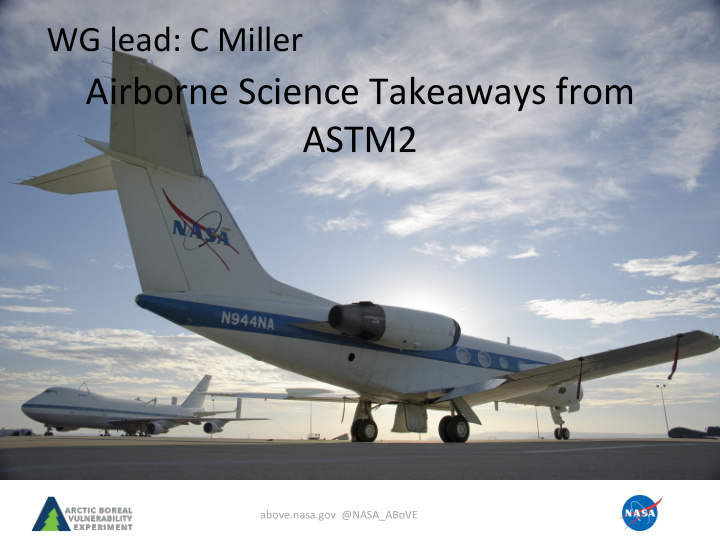



WG lead: C Miller Airborne Science Takeaways from ASTM2 above.nasa.gov @NASA_ABoVE
Revised White Paper Structure • ExecuKve Summary • IntroducKon • FoundaKonal Measurement Strategy – MulK-Freq Radar (UAVSAR, AirMOSS/G-III) – LIDAR/Hyperspectral (LVIS, AV-NG, HyTES, PRISM/ER-2) – Alaska Transects – mature, well defined & jusKfied – Canadian Transects – Need significant work • Case Studies • Satellite Data ConsideraKons • Integra5ng Partners into ABoVE Airborne Ac5vites 2 above.nasa.gov @NASA_ABoVE
IdenKfied Gaps Snow • Albedo/Energy Balance • Water Balance • US Partner RS, site prioriKes • Canadian RS, site prioriKes • More detailed discussion of scaling issues and needs for RS data that • cover a range spaKal and temporal scales and biogeophysical gradients Driving quesKons à Measurement & Sampling Requirements à Airborne • Planning Modeling/Modelers – Is this the data they want/need to improve LSMs for • ABR ecosystems & dynamics IdenKfy nexus locaKons where large transects intersect as foci for • concentrated, mulK-scale research, eg Fairbanks = intersecKon of AK boreal Interior E-W transect and Dalton Highway N-S transect – SCALING ISSUE 3 above.nasa.gov @NASA_ABoVE
ABoVE Airborne Campaign Design • THANK YOU – Working Groups have provided excellent inputs during the ASTM • These will form the new basis for a document • Team review and feedback are criKcal • Time frame is immediate • Send materials to Charles.E.Miller@jpl.nasa.gov • Writers & wriaen contribuKons eagerly accepted 4 above.nasa.gov @NASA_ABoVE
Recommend
More recommend